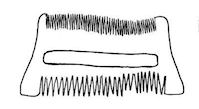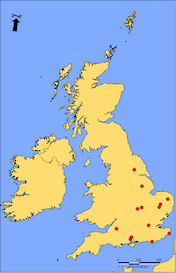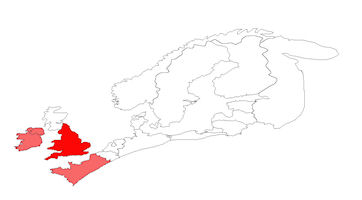
|  |
 |
 [Legend] |
 |

|  |
 |
 [Legend] |
 |
Type 4 consists of composite combs of horn and bone, most frequently represented in the archaeological record by bone 'riveted mounts': short, paired strips of bone, invariably from the ribs of small bovids such as sheep, fastened with between two and four iron rivets (see Biddle 1990b; MacGregor et al. 1999, 1952-4). They are very largely restricted to north-western Europe; the type is best known in the southern British Isles, though it is also well represented in northern France (e.g. Chandevau 2002, 45-8; Goret 1997, fig. 6; Petitjean and Jakubowski 1997, 301-2), and a broadly comparable object is known from a late medieval/post-medieval ditchfill at Vlaardingen, Netherlands; Marloes Rijkelijkhuisen pers. comm.) Examples are found in small numbers from the 9th century, but are most common between the 10th and 12th centuries (Biddle 1990b; Pritchard 1991, 199; MacGregor et al. 1999; 1952; Riddler 2004a, 63-4), and in England they are generally restricted to urban settlements (though see Ashby 2010a).
The comments facility has now been turned off.
© Internet Archaeology/Author(s)
University of York legal statements | Terms and Conditions
| File last updated: Tue Sep 20 2011